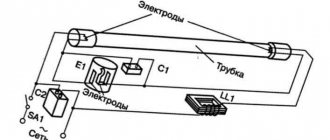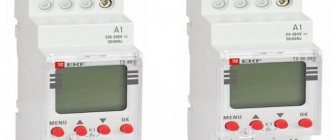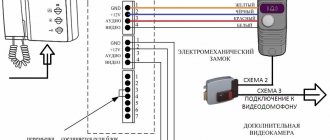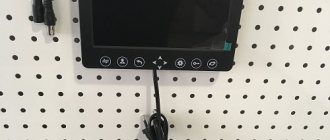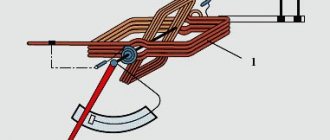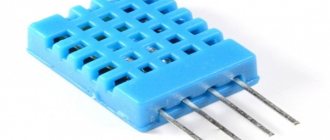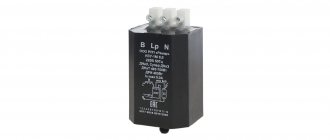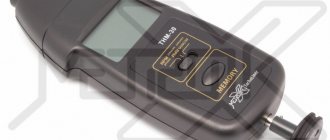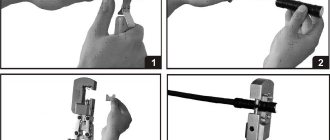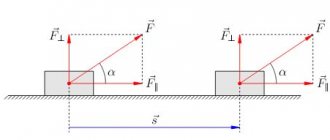An electric gate lock is a combination of a conventional mechanical lock and a modern electronic device. It is used for installation at the entrance of a private house. The electronic gate lock can be opened using a plastic card, button, remote control, or key. The choice of a suitable device will depend on the method of operation, as well as on the installation features.
Electric lock options
General information
Electric locks have many advantages that are unique to them due to their reliable system, as well as their operating principle. Today there are a large number of designs of various configurations.
Design Features
The operating principle of electric locks is quite simple. The locking mechanism of the lock is played by latches in the form of pins, which when closed are pressed tightly by springs into a groove located on the opposite side, thereby locking the gate or wicket.
Electromagnetic type of lock
During opening, when the remote control button is pressed, a plastic key is applied and the stationary button is pressed. Or it is a combination lock, in which the system pulls back the locking pins, compressing the springs. The shutter is located at a certain angle, so the gate can close automatically.
Schematic diagram for connecting an electric lock with your own hands
The most effective system is one that has several modes. The night mode ensures reliable closing of the gate, while the day mode allows you to control the gate without leaving your home. These systems are used for garage doors, entrance gates and doors.
On the gate
Equipment
Often, an electric lock is sold at the same time as a video intercom. It is built into the design. This is quite convenient and allows you to save on purchasing an intercom and a lock separately.
At the same time, there is a saving on installation, since by performing the installation only once, you can get two devices at the same time.
Electromechanical view of the device for a gate
Advantages and disadvantages
A design that combines mechanical reliability and electronic convenience has many advantages.
The main advantages of an electric lock:
- Difficulty of hacking. Many models of electric locks do not have a key hole. Accordingly, an attacker will not be able to determine what type this design belongs to.
- The device does not jam. Opening and closing the electric lock is very easy.
- Long operating time. Unlike mechanical analogues, the service life of an electric lock is 2 times longer.
- Quiet operation.
- The design and installation of an electric lock can be combined with different security systems.
- Possibility of remote opening of the lock.
- Can be installed on any door leaf (corrugated sheet, wood, metal).
Option from the store
Flaws:
- For normal operation, a constant supply of electricity is required;
- An electric lock for a gate is more difficult to install, unlike a mechanical one;
- In many lock models, the bolt is located on the outside, which can accidentally get caught;
- It is advisable to cover the street lock with a visor, otherwise low temperatures and precipitation will cause malfunctions;
- The price of an electric lock is higher than a mechanical one. To this cost you need to add the constant consumption of electricity.
Cisa
Equipment
The classic package includes the following elements: power supply, intercom, call panel, lock itself, keys to it, cover panel, wires and box for the power supply, installation instructions.
Having all these components, installing a lock on the gate yourself will not require much effort. It is necessary to strictly follow the instructions to avoid mistakes.
The lock can be opened in several ways: by pressing the opening button on the intercom or using keys.
Complete set of electromechanical lock
Types of castles
Electric locks for gates differ in design and main purpose.
So, an electric lock can be:
- mortise;
- overhead.
Close-up
There are different types of locks:
- electric strike;
- electric motor;
- electromagnetic;
- electromechanical.
Electric strike
All designs have both their pros and cons:
- Electromechanical. Taking into account reviews on construction forums, these are the most popular designs for a private home. They have proven to be quite reliable, although a little expensive. This is subject to the condition that the product is made by a reputable manufacturer. The selection of products is very large. It allows you to buy a design that fits perfectly in shape, as well as in the installation method. The main advantage is that the kit includes a mechanical key that can be used to open the gate during a power outage. The main disadvantage is that an adapter wire is required, which stretches across the entire sash, which does not always look aesthetically pleasing.
- Electric latch for gate. A type of electromechanical lock. When electricity is supplied, the latch does not lock - the gate opens. During a power outage, the gate closes. This is the main difference in the operating pattern between an electric strike and a lock. The door cannot be opened by turning the handle. Electronic latch is used for lightweight entrance door designs.
- Electromagnetic. This lock does not have a complex mechanism, but it has a holding force of 600–700 kg. It also has a low price. But despite this, there is no huge demand for this device. Since it does not have a spare mechanical keyhole and it needs a constant power supply.
- Electric motor. The design of this lock resembles an electromagnetic structure. The only difference is that the electric lock contains an electric motor with a gearbox, and not a magnet. This device is best suited for heavy swing gates rather than a street entrance door. And its cost is quite high.
Electric lock connection diagram
Electromechanical locks
Such a lock has a spring inside, which is charged when the door is closed and maintains its position until power is supplied to the lock. A short voltage pulse acts on the electromagnet, and it unlocks the spring mechanism, snapping the tongue off the lock. Thus, the electromechanical lock only needs power to unlock the doors. In addition, you can open the lock with a regular key. Considering all of the above, you can see that if the power goes out, nothing bad will happen, the lock will still work, and that is why it is so popular. The only disadvantage of such a lock is the need to first open the door so that it can be closed later.
Features of choice
First, you need to pay attention to the location of the housing, since it can be made for right- and left-sided gate leaves.
The main emphasis should be on the following points:
- level of reliability (for example, 2 rods can withstand much more mechanical load);
- compatibility with the entrance structure, since not all wickets or gates fit a certain leaf pattern;
- the electric lock can be connected both with and without an intercom;
- required functionality;
- different manufacturers may supply a battery for autonomous operation;
- possibility of opening mechanically;
- type of key for opening: electronic lock or remote control;
- locking mechanism: lever or cylinder.
Electromechanical latch
Normally open and normally closed contacts
Contacts of this type in stationary mode both open the electrical circuit and can close it if necessary. Also, such contacts can be called normally open.
Normally open contacts are suitable for controlling an electromechanical type lock. They are present on most calling panels of intercoms and controllers with remote access. Often, to open an electromechanical lock, it is necessary to apply voltage for a few seconds. People don't have to wait long; the door opens almost instantly. By the way, if voltage is applied for a long time, problems with the electromechanical lock are possible - there is a high probability that it will simply break.
Normally closed contacts act completely opposite to normally open ones. Their electrical circuit is in a state of constant closure and occasionally opens. This type of contact is ideal for controlling an electromagnetic lock. Access control system controllers have them, but they are not always present on calling panels.
By the way, it should be noted that when operating electromagnetic locks, they require opening the electrical power circuit for a short time, since you need to have time to grab the handle and open the door. In other words, it is necessary to set a delay time on the control device so that a person can get inside without hindrance.
Some devices can combine several types of contacts at once. They are usually enclosed in separate wires or terminal blocks. On some devices, to select a contact, you need to move a jumper, switch a toggle switch, short-circuit certain wires, etc.
Review of manufacturers
Today, electronic locks are made by many manufacturers. Among this large number, we can highlight several proven manufacturing plants that are distinguished by the high quality of their products.
CISA
The most popular manufacturer of various designs of locks for electric gates is the CISA company. Locking devices from this company do not require constant power supply. They only need an impulse to open or close the gate.
Option for a gate at the dacha
The equipment for any model is standard. The electrical system must be purchased separately. The CISA electric lock can be purchased on the Avito website.
The selection of products is quite large, and the devices are not very expensive (for example, the invoice model 1A731.00.0 costs from 7,200 rubles). A special feature is that during a power outage, all devices can be opened mechanically.
Intercom
Mingyang
The manufacturing plant has focused on increased performance and comfort during operation of its products. Most often, products are represented by electric locks with remote controls, as well as stationary intercoms.
Falcon Eye
Any type of electric locks from this manufacturer is compatible with various intercom systems, video cameras and alarms. Strength: from 500 kg. Temperature range: from −40 to +50 degrees.
Falcon eye
Niedzwiedz lock
The JoyLock is used for vehicles with an electronic transmission. It is an electric lock with a joystick. The lock is made of steel 4 mm thick.
The design contains an anti-vandal lock DORMAKABA (German production).
The uniqueness is that professional installation is not required. You can install the entire lock structure yourself.
Latch on the gate
"Sheriff"
These locks are used as security in safes and self-service terminals. Very reliable, they have the most advanced anti-hacking system.
Self-installation and configuration of an electromechanical lock with video intercom
Installation process
To install an electromechanical locking mechanism you will need:
- electric or hand drill;
- Bulgarian;
- hammer and chisel if the door is wooden;
- set of self-tapping screws;
- screwdriver;
- pencil.
Having prepared the tools, carefully study the installation instructions. This work does not require special skills, so you can immediately begin installation, which is done like this:
- We attach the mechanical part to the door and mark the location of the lock.
Performing markup
- For a mortise lock, prepare the seat using a grinder or chisel.
- We do a test fitting and check that the seat matches the dimensions of the lock.
Carrying out fitting
- We drill a hole for the cylinder and the calling panel of the video intercom with a camera. On a wooden panel, the gateway is made with a feather drill, on a metal one - by drilling small-diameter holes around the perimeter.
- Using a drill, we prepare channels for self-tapping screws.
- We mark and install the fixing strip on the door frame. For a mortise lock, it is necessary to make recesses for the bolts to fit into.
- We mount the lock, secure the parts with fastening screws and self-tapping screws, and route the control wires to the inside of the door.
The lock is secured with screws
It is necessary to ensure that the wires are positioned freely and are not crushed or chafed.
- We check the operation of the mechanical part of the locking mechanism.
Connection
If everything is functioning normally, you can proceed directly to connecting the product:
- We begin connecting the electromechanical lock by studying the electrical circuit.
Connecting an electromechanical lock to power
- We do key programming. To do this, you need to set the jumper on the back of the magnetic reader to the “Programming” position. We apply one of the keys to the reader for 1-2 seconds, wait for the buzzer. Now we have a master key that will allow us to configure the rest. To put the remaining keys into operation, you must perform the following steps:
- do not install the jumper;
- press the lock opening button, holding it, touch the master key to the reader;
- wait until the lock closes and the sound signal sounds;
- touch the reader with the key that needs to be programmed.
- Repeat the procedure for each subsequent key.
Options for electromagnetic readers with a programmable key
The same method is used to erase keys from the controller’s memory.
- To connect a video intercom you will need a 2x0.5 or 2x0.75 cable. We select a location for installation and determine the length of the cable. To connect, you will need two pieces of cable: they will connect the calling panel to the videophone, the second will connect the lock to the power supply.
Flat cable ShVVP 2x0.5 is ideal for connecting an electric lock
- Using the connection diagram, we connect the wires exactly according to the instructions. Different manufacturers use different colors to designate connecting cables, so it is important to find in the instructions the purpose of each wire for a specific lock model.
Each manufacturer assigns its own cable color
Installing an electric lock on a gate
Step-by-step connection of an electric lock:
- First you need to prepare the installation site. Then holes for fastening are cut out.
- After this, the product is secured to the gate with bolts or by welding. It should be taken into account that not any electric lock can be secured with a welding machine, since the products are often coated with a protective layer from external mechanical loads.
- Next, you should align the electric lock and check the compatibility of the latch with the counterpart in the support post.
- Then a hole is cut for the intercom. You need to make a branch from the electrical wire that is connected to the lock and connect it to the intercom.
- To be able to control the electric lock and intercom from home, cables from both mechanisms are installed next to the electrical wire. In the house they are connected to the control unit.
- If the locking design of the lock is compatible with the video intercom, then it must be connected directly to it, and then the wire must be pulled into the house.
Set with intercom
Detailed instructions with explanations for installing an electronic lock are presented in the video below.
We connect and configure the electromagnetic lock with our own hands
The owner of an electromagnetic lock who decides to install and connect it themselves must begin work by carefully studying the instructions and electrical connection diagram. If the main mechanism is already installed, you need to install auxiliary devices: a code reader and an exit button. To work you will need:
- electric drill;
- screws for wood or metal;
- pencil;
- screwdriver.
It is advisable to place the reader as close to the lock as possible, and the exit button on the door frame.
The reader wires must be securely hidden! To do this, a through hole is drilled in the door, through which the wires will be routed inside. The channel itself will be covered by the housing of the reading device.
For further work you will need a two-core cable with a cross section of 0.5 mm. It is advisable to use a cable rather than a wire; an additional protective coating will protect against external damage. The procedure should be as follows:
- Studying the connection diagram of the lock to the controller. The wires have different colors, which makes the work much easier.
Electromagnetic lock controller connection diagram
- Laying the cable from the lock to the controller. The cable must be placed so that it can be hidden under the door frame trim. For installation on the door leaf, a corrugated pipe or special cable ducts are used, which are attached to the door.
This is what a cable looks like when laid across a door leaf
- Installation of all components of the lock connection diagram. The power contacts should be connected last to prevent short circuits.
For convenience, it is necessary to connect the wires before installing the controller in its original place.
- Connect the lock to the power supply and check its operation. If everything is done correctly, a buzzer will sound when the controller is connected to the network.
- Disconnect the lock from the power supply, install the controller in its regular place next to the voltage source, for example, a 220 V socket, and connect it again.
- Now you can start setting up the electromagnetic lock:
- if the lock is controlled by a card with a code, you must press the “Registration” button and bring each card one by one to the reader, then press the “Registration” button again. The lock is programmed;
- The combination lock is configured in a similar way: after pressing the “Registration” button, the desired code is entered, which is fixed by pressing the button again.
- Invisible locks with a remote control are sold already configured.
- Check the operation of the configured locking device.
Installed card electromagnetic lock
The connection of the electromagnetic lock is completed.
Where to put the lock?
A convenient place to use is on the doorframe. And the lock will look beautiful, and washers can be placed under the screws for a tighter fit. There are several main installation options:
- on the jamb from the inside, with the core towards the door;
- contact pad horizontally;
- contact pad inward;
- on the corner.
If the lock is mounted on the top jamb from the inside, no additional fasteners are needed: the core is facing the door, the contact pad is directly opposite. Placing the lock with the contact pad inward and opening the door inward may also be necessary if the door itself is glass - then a Z-shaped corner is used instead of a plate. It also happens that the small width of the jamb does not allow installing a lock behind the door - the problem is solved with the help of a corner, they expand the support area and install the lock there as usual, from the inside and with the core to the door.
If it is necessary for the door to open in the direction where the lock is located, the contact pad is placed horizontally, along the top, so that a minimum gap is obtained. For this, a corner and washers are used - it’s difficult to calculate, it’s easier to adjust. An important point: if the door warps, the entire system will stop functioning. By the way, for this option of installing a lock, an additional service is popular - hiding the device with a decorative profile (located around the perimeter).
